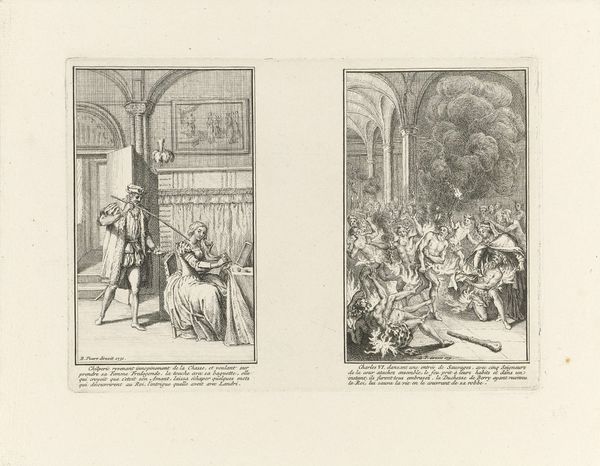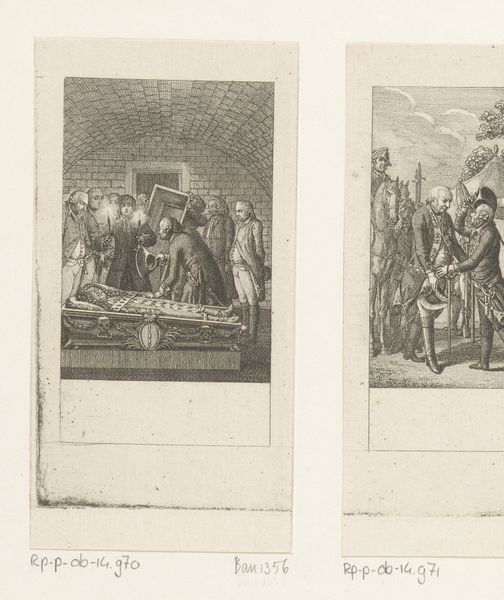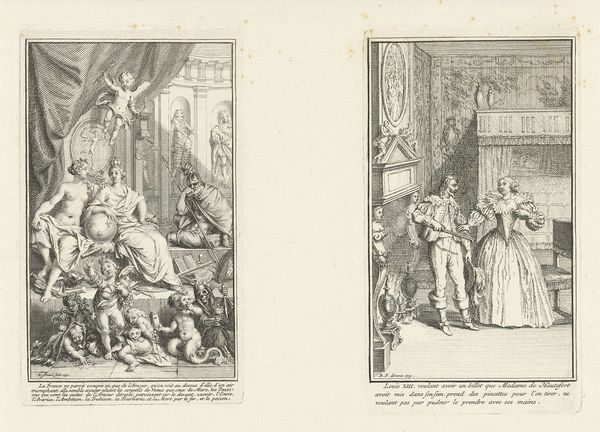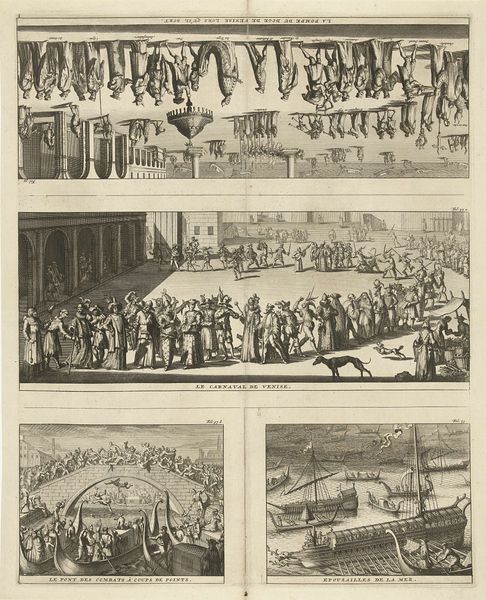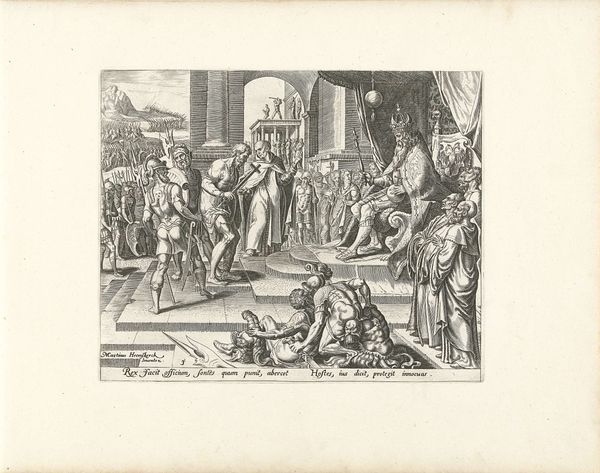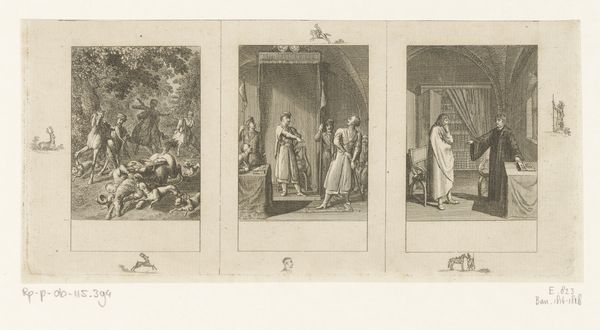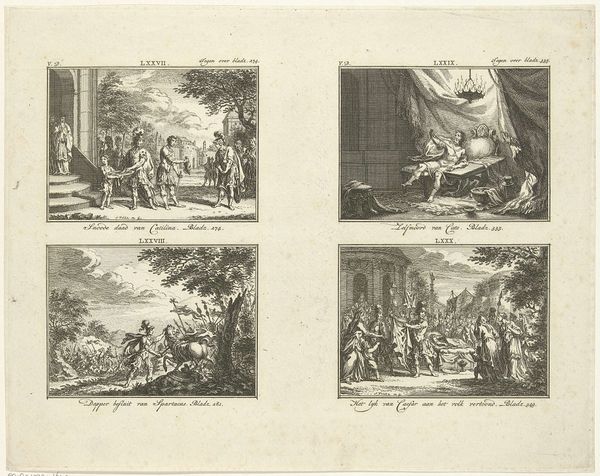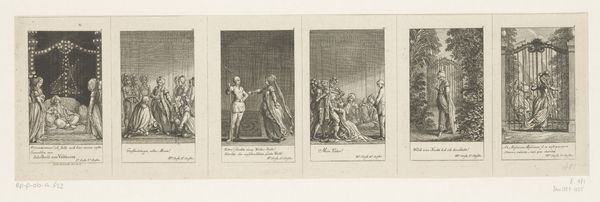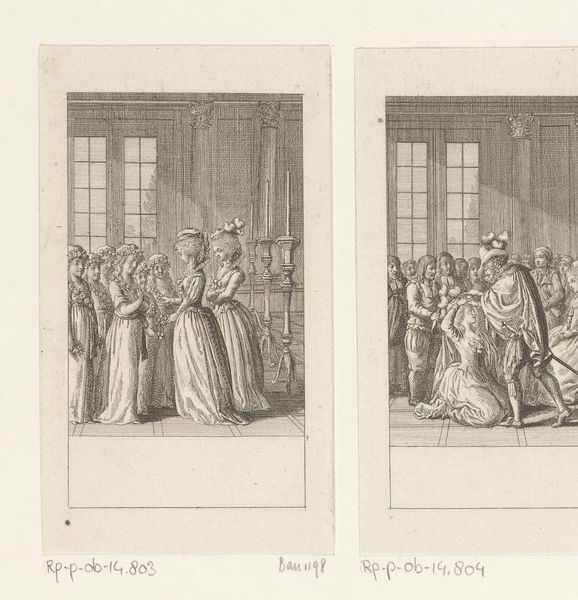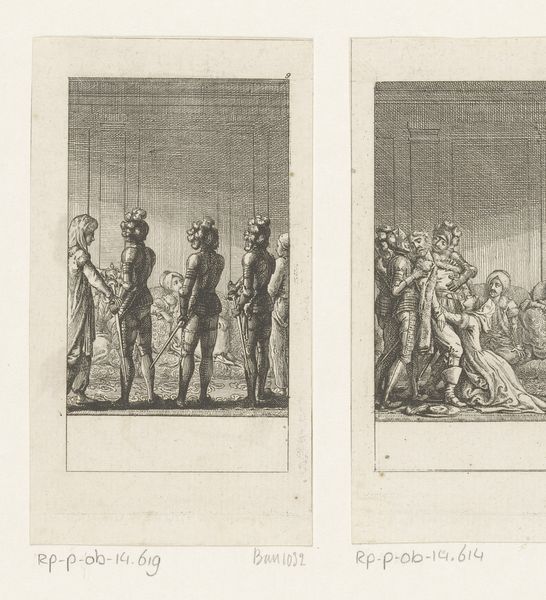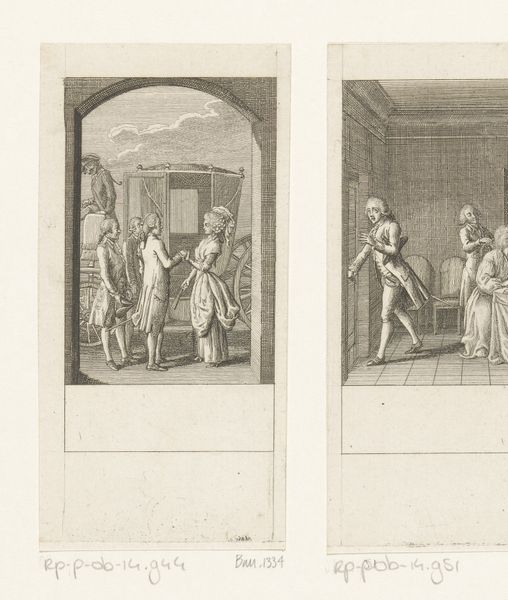
Onversneden vel met zes voorstellingen uit de geschiedenis van de abdij van Saint-Denis 1706
0:00
0:00
print, engraving
#
aged paper
#
toned paper
#
narrative-art
#
baroque
# print
#
old engraving style
#
history-painting
#
engraving
Dimensions: height 316 mm, width 408 mm
Copyright: Rijks Museum: Open Domain
Curator: Here we have Philippe Simonneau’s "Onversneden vel met zes voorstellingen uit de geschiedenis van de abdij van Saint-Denis," created in 1706. Editor: My first impression is one of restrained elegance, the linear quality imparting a sense of archaic refinement. There is something particularly intriguing in how these six vignettes are laid out, distinct yet connected on a single sheet. Curator: Indeed. As an engraving, the artwork benefits from strong contrasts, but let us look closer at its material and process. The linear precision suggests that each scene required meticulous craftsmanship. This wasn't mass production; instead, each plate was deliberately etched. Consider what this says about its dissemination and target audience. Editor: From a formal standpoint, notice the repetitive architectural elements within each scene: towering arches, heavy drapes. The artist uses the repetition to suggest both grandeur and confinement. The light, achieved through linear variation, serves almost as an actor. The engravings on toned paper certainly contribute to that sense. But it's curious, isn't it? This elaborate portrayal of power and devotion ultimately serves to tell a manufactured truth, presenting perhaps an elevated interpretation of history. What was Simonneau actually commissioned to portray? Curator: Ah, excellent. These prints were likely produced as historical records or as a means to enshrine certain moments. The social fabric is woven into its very creation: a commission, materials sourced through specific markets, engravers’ labor, printmakers, vendors, all dependent upon economic currents and artistic tastes within the context of late baroque aesthetics. These images may reflect not literal historical truths, but also a particular desired narrative for their time. Editor: The materiality whispers a narrative beyond the surface. Paper, ink, tools -- consider the resources required and the knowledge that was both invested in and constrained this process. This history impacts our contemporary interpretation, it underscores how historical accounts, especially when mediated through art, often emerge with a clear bias. Curator: Yes. These scenes echo the opulence and the carefully orchestrated presentation, while each carefully inscribed line bears the legacy of labor and commerce. Editor: In essence, both form and making speak volumes about the power structures at play.
Comments
No comments
Be the first to comment and join the conversation on the ultimate creative platform.


